Recruit and Retain the Right Providers
Clarity about your ED’s goals to provide exceptional quality care and an outstanding patient experience is essential from the start. Also essential is giving providers something valuable in return.
The simple secret to attracting (and retaining) exceptional providers is to treat them exceptionally well.
Demonstrate that you value your clinicians by recognizing and respecting their needs as practicing physicians. Promise and deliver things like:
- Reasonable scheduling to allow for a life outside the ED • Worthy clinical leadership
- A stable, supportive practice environment
- Growth, education, and leadership opportunities
- Access to healthcare and retirement plans
- Continuous feedback and communication, making them feel like part of a larger whole
Offerings like these will help your Emergency Department attract and retain the kind of providers who share your ED’s values for people and their experience.
Remember, as necessary as high-quality emergency medicine providers are to the ED patient experience, they cannot be expected to affect significant change without support. You must also equip them with the proper tools.
Recognize Compensation Inspiration
Also instrumental in boosting satisfaction: incentives. Time and again, financial incentives prove to be tremendous motivators for high-quality providers.
When providers have a hand in shaping the goals to which their incentives are tied, they’re more motivated to achieve them.
When tying goals to incentives, be on the lookout for opportunities to create shared goals and incentives for ED providers and the non-ED providers upon whom they rely (Radiologists, Hospitalists, etc.). Shared, incentivized goals build collaborative processes and reinforce teamwork between the groups, which in turn boost the entire hospital’s overall efficiency, communication, and ultimately, the patient experience.
Involve Medical Director Training and Coaches
Another tool providers need to elevate patient satisfaction in your ED is a Medical Director who is trained to both manage and lead. While a clinically gifted Medical Director is certainly a worthwhile part of any ED, if you want to excel at patient satisfaction, a Medical Director that understands how to build and sustain a stable, supportive practice environment is crucial. If providers are to thrive, they must work in a practice environment that is well managed, both financially and operationally, so they are free to focus on caring for their patients.
A strong Medical Director is one who makes the initiative to share the skills they possess, but also makes the effort to learn from his or her entire team. Courses and coaching in conflict management and resolution, documentation management, quality and risk management, and of course, patient satisfaction are a must. Give your Medical Director support and encourage their efforts. That positive reinforcement will foster the entire ED’s teamwork, and those processes of positive reinforcement will be passed from Medical Director to provider to ultimately the patient.
Once the underpinnings of great care— excellent, well-equipped, goal-directed providers and a strong Medical Director— are in place, you’ve laid the foundation for outstanding customer service. Now, you’re ready to impact not just patient satisfaction, but to excel at patient experience.
Set Measurable, Realistic Goals
Abstract goals like “improve patient satisfaction” or “communicate better with patients” offer minimal specific insights to bring a team together to impact change. However, defined targets with measurable goals, such as “reduce door-to-doctor time from 45 minutes to 30 minutes within six months,” gives the entire ED team a clear, quantifiable, attainable goal.
Be aware however: No matter how specific, measurable, and realistic, goals that simply come down from above rarely inspire or motivate.
It’s important for administration to work collaboratively with ED providers, whose voices and daily on-the-ground experience are vital to identifying appropriate, impactful goals, as well as potential obstacles and ideas for overcoming them. Using every team member’s input also cultivates a sense of ownership of the process, encouraging buy-in.
Follow Metrics
1. Monitor trends quickly and provide access to real-time data. A high- functioning ED needs to make real-time adjustments—adjustments built upon knowledge from service recovery and real-time positive behaviors which promote excellent patient experience. This allows an ED to improve weaknesses, monitor improvement trends, and build upon excellence already being delivered.
Collecting a high volume of patient feedback while the patient is in the ED and immediately sharing it with the ED team is most important. Teams should receive positive feedback and have the ability to perform service recovery in a timely manner, so every patient’s ED experience is exceptional.
2. Gather specific operational metrics. Identify areas of impediment to patient flow and where process improvement could affect change in the overall patient experience by measuring:
- Trends in patient arrival and departure information
- Turnaround times
- Patient acuity statistics
- Provider productivity
- CPT and diagnostic codes
- Ancillary service utilization
3. Track daily, weekly, and monthly trends for individuals and teams. Providers, Nurses, and all ED team members must receive continuous feedback about both team and individual progress. As naturally competitive achievers, providers respond especially well to data that enables them to compete against their own day-to-day performance and that of their colleagues.
Tidy Up the Place
You never get a second chance to make a first impression. The good news: You can make a good first impression just by ensuring you keep the ED environment neat, clean, and tidy.
Take a look around your ED.
- Is the waiting area cluttered or clean?
- Are patient rooms clean or in disarray?
- Are the chairs old, frayed, or broken?
- Have windows been washed and cleared of cobwebs?
- Is the bulletin board organized with up-to-date, relevant information or covered over with old posters and notices?
- Is the Nurse’s station messy and clamorous or orderly and quiet?
The fixes are easy enough: Brighten up dingy and dark areas with a fresh coat of paint and better lighting. Remove clutter and empty the trash. Keep bathrooms clean and well stocked with soap and towels.
If the overall scene presents a professional appearance, you will positively influence the perceptions of patients and their families from the moment they enter your doors.
Pay Personal Attention
You never get a second chance to make a good second impression either. Assuming you’ve taken the first step—presenting a professional appearance—making a good second impression comes through paying personal attention.
That means having appropriate staffing ratios for peak times and ensuring your ED runs at maximum efficiency at all times. Plan for contingencies by having both full-time and part-time physicians available (and part-time NPs and PAs as well).
As a rule, we recommend maintaining one to two part-time doctors credentialed for every full-time Physician.
While increasing the provider-to-patient ratio certainly allows for more personalized care and attention, it’s also an expensive option that few EDs can readily afford. If budget is tight, pair physicians with scribes so they can focus on patient care and communication rather than administrative functions and documentation.
The improved interaction between physicians and their patients (and patients’ families) will translate into a significantly improved patient encounter.
Communicate Effectively
Communication can make or break a patient’s experience. However, more communication doesn’t necessarily equate to better communication. Rather, content and delivery influence patient perception far more than time alone.
Two tips for improving content and delivery are:
- Get rid of “doctor speak.” Medical terminology, though second nature to physicians, is in direct opposition with the health literacy of the average patient. Doctors should, therefore, simplify their vocabulary and shorten sentence lengths to a level that an average sixth-to-eighth-grade student could easily comprehend.
- Show compassion and empathy. Content is one thing; delivery is another. To that end, doctors should clothe their content with compassion and empathy, qualities associated with better outcomes, greater patient safety, fewer malpractice claims, and a better patient experience.
Expressing these qualities, however, can prove challenging in a busy ED environment. So, just like doctors are trained to think analytically, they should also be trained to communicate with compassion and empathy.
Offer providers tools and techniques, such as video instruction, a Medical Director who leads by example, and hands-on training, to teach them how to communicate more effectively under pressure.
Ask For Feedback
Maximize the opportunity to shape patient perception by capping off every encounter with a visit from a patient advocate. Akin to a relief pitcher who takes the mound to nab the final outs when his team is in the lead, a patient advocate acts as a closer in your ED. Filled by a Nurse, scribe, or well-trained volunteer, the role of this “designated patient satisfaction officer” is to make rounds every day, asking each patient questions related to his or her stay in the ED.
The questions should be designed to identify any concerns or needs the patient (or family) might have and to determine if any gaps in service, care, or understanding exist. As a practical matter, ask questions that reflect those found in your existing ED patient satisfaction survey.
A few examples:
- Do you have any questions about your stay/tests/diagnosis?
- Do you understand what you need to do next?
- Are you/were you comfortable during your stay?
- Do you feel we did a good job managing your pain/responding to your needs?
- Did the Physician(s) and Nurse(s) who treated you identify themselves?
If the patient advocate detects a verifiable lack of service or comprehension, the ED staff now has the chance to remedy that before discharging the patient—an outcome that can lead to better patient satisfaction scores.








